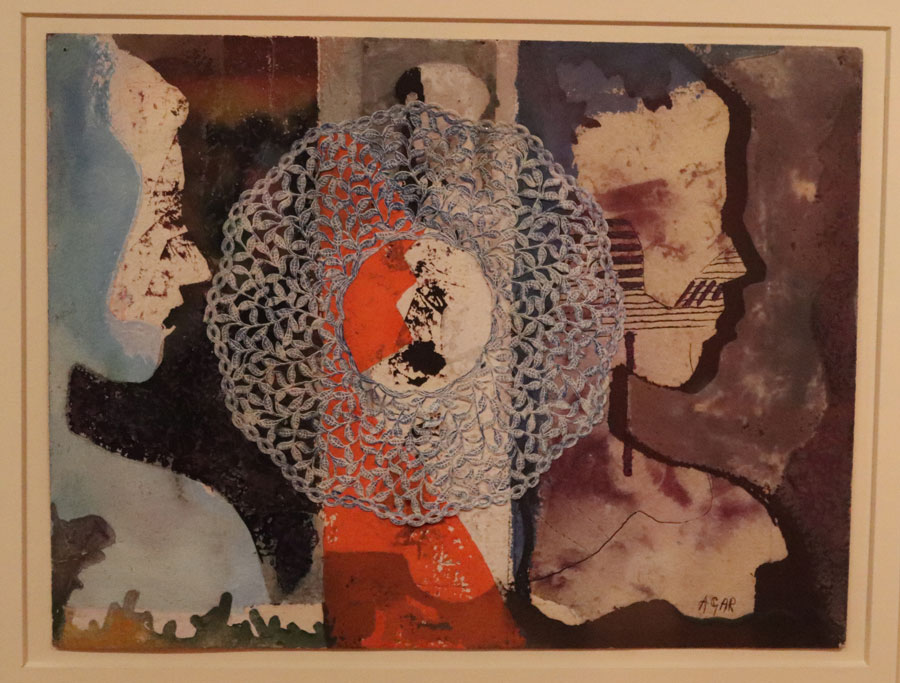Eileen Agar, Double Take (c.1936)
- The Potteries Museum and Art Gallery, Stoke-on-Trent

Fig.1 Eileen Agar, Double Take (1936). © The Estate of Eileen Agar / Bridgeman Images. Image Courtesy of The Potteries Art Gallery and Museum
Agar was a British artist whose work is most commonly associated with the Surrealist movement. She was notably one of the few female artists included in the 1936 International Surrealist Exhibition in London, in which she had three paintings and five objects on display. Agar was a highly successful female artist whose work is now featured in collections internationally.
Double Take is part of the collection at the Potteries Museum and Art Gallery, Stoke-On-Trent. The piece is a collage which shows two female profiles in the outer thirds of the canvas facing the same direction. A painted column separates the figures, and a doily - a symbol of femininity and female labour - has been placed on top. While the outline of the two figures is identical, they have been painted differently. The left one is light and white and light blue in colour, while the other is much darker, earthy in colour, and has been distressed more by the artist.
Psychoanalysis was an important influence for Surrealism, and the presentation of two identical figures in this work links to new understandings of the psyche and the Freudian idea of the conscious and unconscious self. It could be argued that the brighter figure represents the conscious self while the other represents the unconscious, which contains all the repressed memories and traumas of the individual. The doily connects this to the identity and traditional roles of women. This work could be interpreted as a depiction of the psychological struggle of the individual woman against socially constructed ideas of femininity.